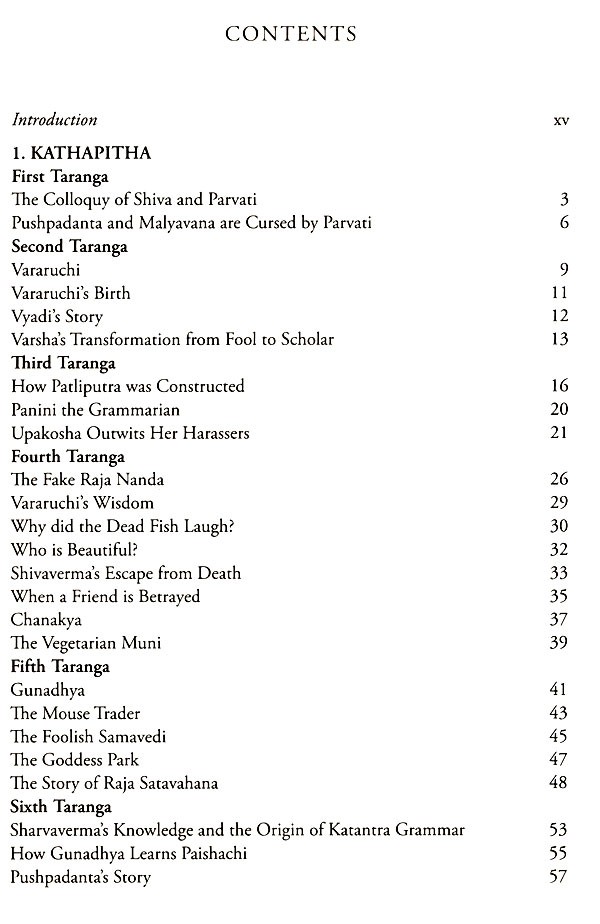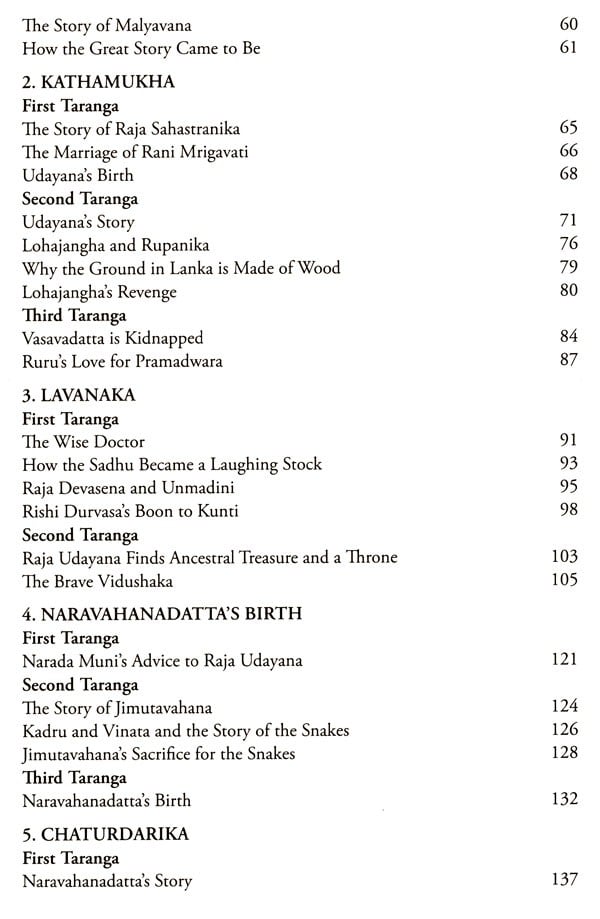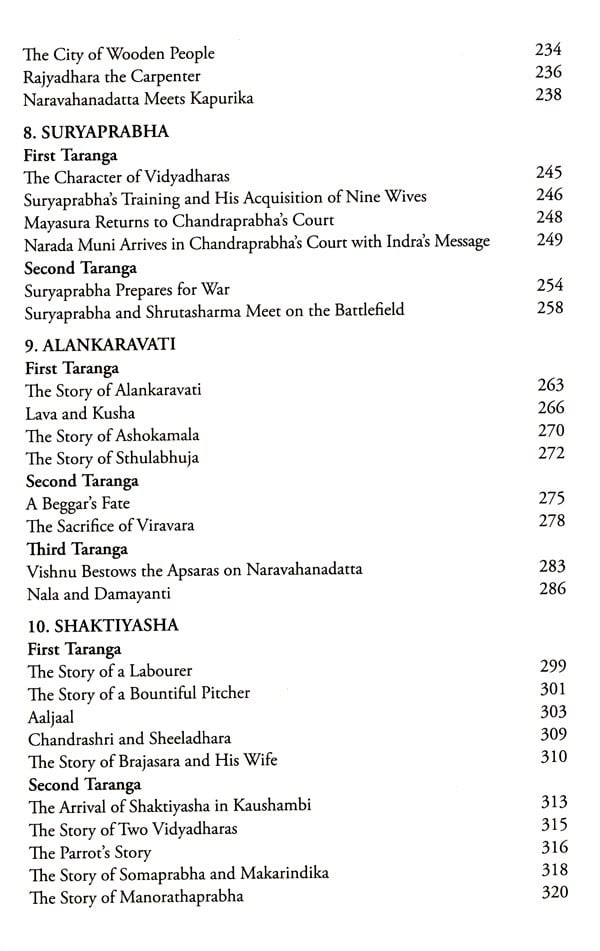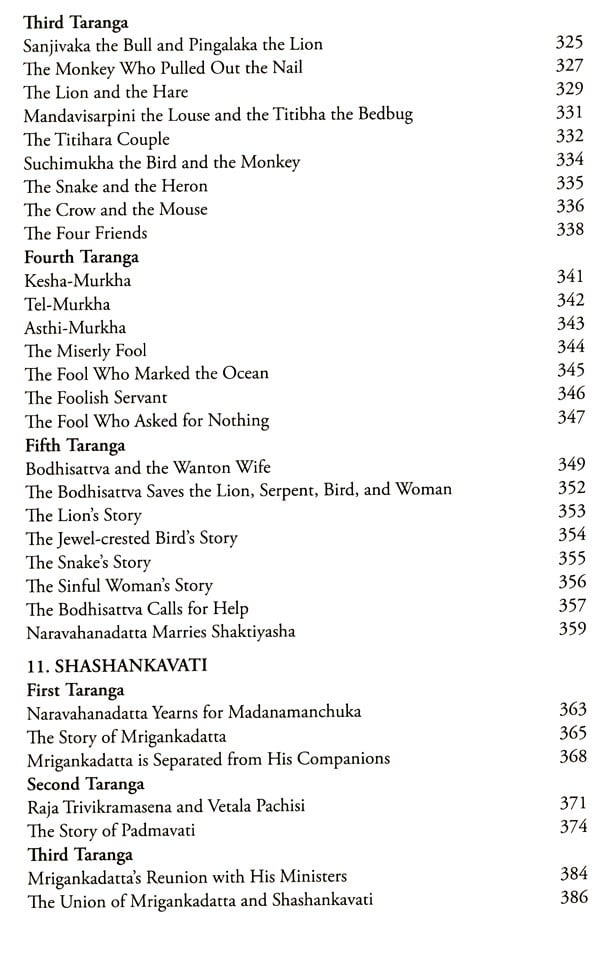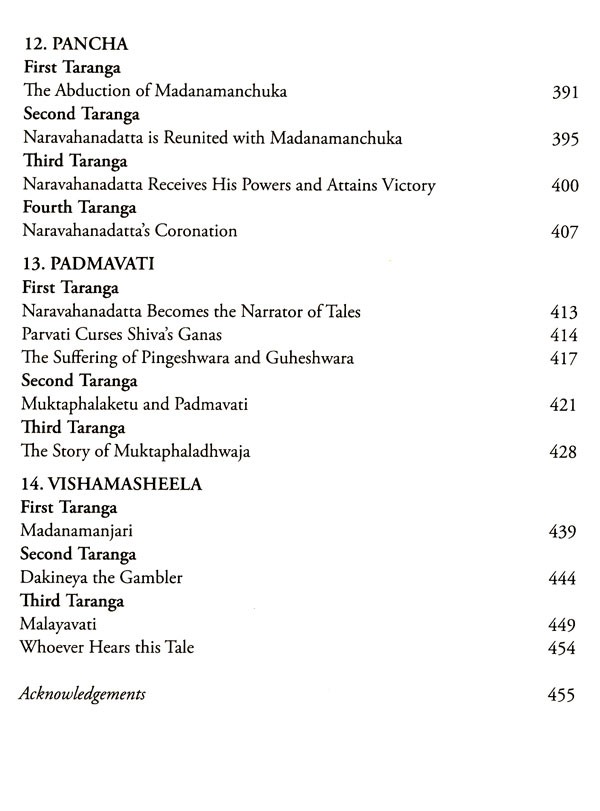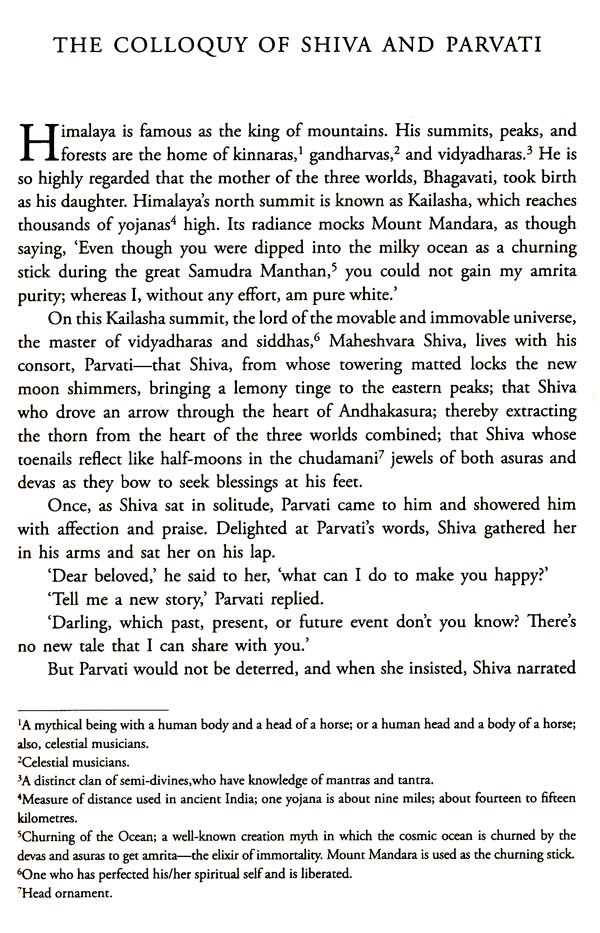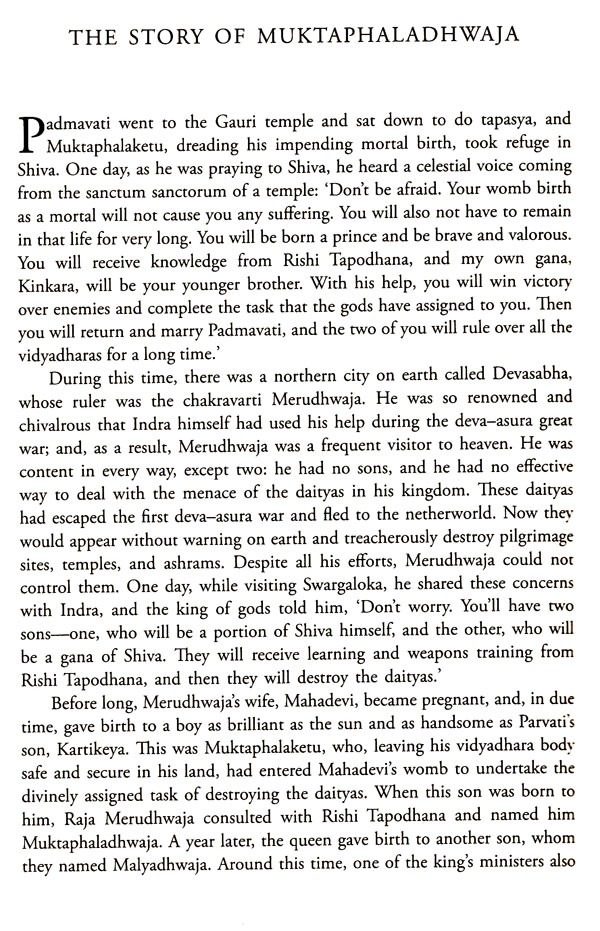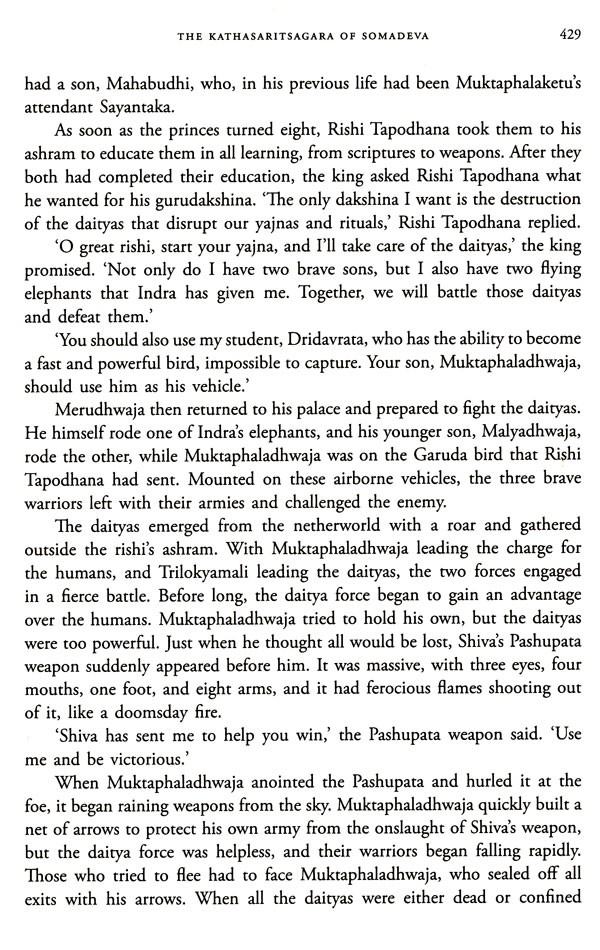
The Kathasaritsagara of Somadeva
Book Specification
| Item Code: | NBZ201 |
| Author: | Meena Arora Nayak |
| Publisher: | Rupa Publication Pvt. Ltd. |
| Language: | ENGLISH |
| Edition: | 2020 |
| ISBN: | 9788194874157 |
| Pages: | 501 |
| Cover: | HRADCOVER |
| Other Details | 9.15 X 6.10 inch |
| Weight | 680 gm |
Book Description
One of India's greatest epics, The Kathasaritsagara is thought to have been compiled around 1070 CE by Somadeva Bhatt, during the reign of Raja Ananta of the Lohara dynasty of Kashmir. Even though this extraordinary work is one of the longest creations in Indian and world literature, it is considered to be only a small part of an even longer work called Brihatkatha, composed by Gunadhya in a lost language known as Paisachi. Somadeva collected and retold the stories of The Kathasaritsagara in Sanskrit to entertain Raja Ananta's wife, Suryavati. This masterpiece is foundational for many of India's best-loved folk tale traditions, such as Vetala Pachisi and Panchatantra, and it has influenced many of the world's best-known classics, including One Thousand and One Nights, The Decameron, and The Canterbury Tales. In addition, contemporary writers like Salman Rushdie have drawn from the work in books like Haroun and the Sea of Stories.
Within its vast frame, The Kathasaritsagara has several hundred stories that owe their origin to India's limitless storehouse of myth, scripture, and folklore. Snake gods rub shoulders with enchanted princesses, and heroic warrior-kings battle rakshasas tall as the sky and wide as the ocean. Celestial apsaras seduce handsome princes, wise prostitutes counsel errant husbands, fools parley with ghouls, and riddlers and talking monkeys pace through the tales. Here you will find talking birds and swindlers, beggars and conjurers, sages and polymaths, divine beings and semi-divine vidyadharas, yakshas and yoginis, walking corpses and sleeping giants, and a host of other remarkable creatures mingling with ordinary men and women in a multitude of magical kingdoms, enchanted islands, and forbidding forests in the three worlds—heaven, earth, and the netherworld. And through this skein of stories contained in eighteen books, Somadeva spins tales of love, infidelity, death, rebirth, sacrifice, fulfilment, courage, cowardliness, honesty, untruth, separation, togetherness, joy, sadness, and much, much more.
The central story of this epic revolves around the son of the famed Raja Udayana, Naravahanadatta, and his marital quests, in the course of which he acquires numerous wives, encounters a host of memorable characters, and wins supremacy over the mystical vidyadharas. Meena Arora Nayak's brilliant new retelling of The Kathasaritsagara, the first major rendition of the epic in a quarter century, closely follows the adventures of Naravahanadatta and brings these ancient tales to new and enthralling life.
MEENA ARORA NAYAK is the author of the bestselling The Blue Lotus: Myths and Folktales of India. Her other books include Evil in the Mahabharata, Endless Rain, About Daddy, In the Aftermath, and The Puffin Book of Legendary Lives.
When Parvati's irresistible allure churned like Mount Mandara in the ocean of Shiva's mouth, the story that emerged was amrita; whoever respects this elixir and eagerly imbibes it will achieve unimpeded knowledge and high status with Shiva's grace.
413 This promise of elevation through the benediction of the story is established 414 at the very beginning of Somadeva's Kathasaritsagara. In fact, telling a story or 417 listening to it is believed to be an act of transcendence in most cultures. For example, in Hindu belief, the Vedic goddess of speech, Vac (identified with 421 Saraswati) inspires all seers, poets, and storytellers. She brings joy through verbal expression and makes those whom she loves wise;1 the Qur'an says, 428 `So relate the story: perchance they may reflect'2 and in the New Testament, Jesus's parables are considered his word.
A story not only connects people to the divine, but it also lends meaning 439 to their earthly existence. It encapsulates a society's histories and provides paradigms for life and relationships. While giving each individual a sense 444 of belonging, it also widens his or her horizons. In other words, stories are a source of knowledge—knowledge that penetrates ignorance. In Hindu 449 traditions, ignorance is the greatest sin; hence, ultimately, a good story cleanses 454 one of sin.
The pedestal of the Kathasaritsagara-the `Kathapithd—establishes the 455 premise of how liberating a story can be.
One day Parvati asks Shiva to tell her a new story. Shiva then tells her a story that has seven wondrous tales about the vidyadharas (semi-divine beings who hold knowledge of mantra and tantra). However, when Shiva is narrating these tales to Parvati in a private grove, one of Shiva's ganas, who has made himself invisible, enters the grove and also hears the narration.
**Contents and Sample Pages**
